Learning from the past, from others, from both Change Management successes and failures is critical for future success. And with the increased level of change being experienced by organisations right now it is a crucial element of your Change Management approach.
However, rather than just rely on case studies and success stories as a learning resource, we draw upon our database of Change Management data – including bench-marking data from 100's of organisations globally - to provide keen insights to help improve your change management capability and implement change that “sticks”.

Over the last 10 years we have captured over 600,000 data points about change projects through our online tools. This data is available to us in real-time and provides information and insights into understanding what really makes Change Management initiatives successful.
Here are 5 key insights on Change Management data from our own analysis.
#1 Real commitment to change appears hard to achieve
Commitment comes about when those people impacted by a particular change are truly working in a new way, whether through a new process, new system or new behaviors. Even higher commitment comes when people feel ownership of the change.
Digging into the database - when we measure true success in terms of peoples’ commitment to change, our data consistently shows that while there is a 54% chance of acceptance, there is only a 1 in 4 chance of achieving commitment as shown in our diagram below.
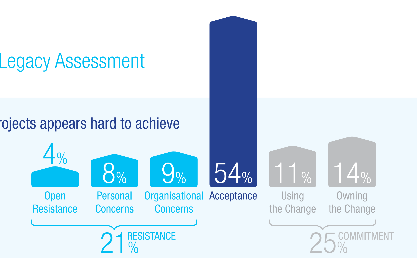
In our experience acceptance brings about compliance; people tend to only do the bare minimum to ‘tick the boxes’ and have no vested interest to ensure the changes truly take hold.
While this may seem like a disheartening statistic, we are assuming that the same Change Management practices are used in the present as they have in the past.
The next 4 of our findings identify some of the most important areas that Change projects can focus on to shift people from acceptance to commitment and sustain the Change.
#2 Risks can be proactively managed to increase commitment
Identifying, and proactively managing key people risks that can mean low commitment on your change projects, risks throughout the change implementation removes the barriers that your workforce face to committing to the change.
Learning what went wrong in the past, in your organisational environment, will help you identify the top risks to your change project. Our own data shows that early planning to undertake actions to address these problem areas can improve commitment levels significantly.
By consistently our data across organisations we’ve identified the top 5 risks that change initiatives have faced in the past.
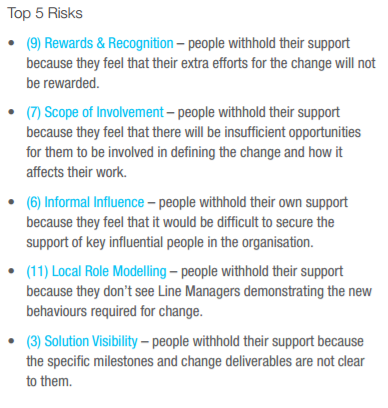
You may find your risks are the same, or not. Every change implementation is slightly different and it is important to make sure you take the time to truly understand the risks you face so you can address them appropriately.
The key thing is having the tools and platform in place to collect, analyze and quickly act on the risks you identify. This is where a digital Change Management platform like Roadmap Pro becomes key.
#3 Regular tracking against the project lifecycle stages shows how commitment levels shift
While this may seem like an obvious statement, what is interesting is how they shift over time. By analyzing the baseline set from the data in our Initiative Legacy Assessment (see figure 1 above) we found that while resistance levels remain at about the same levels through the lifecycle, acceptance levels peak early on and then reduce as people move from acceptance through to commitment.
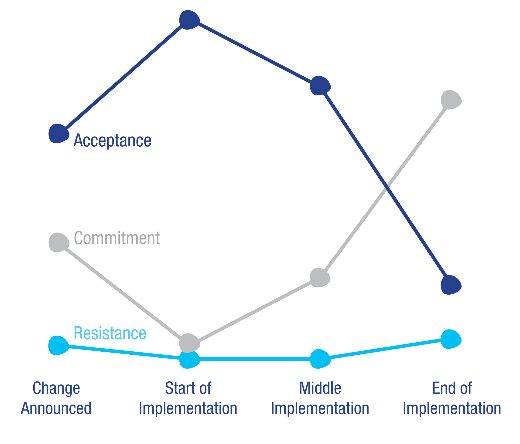
This tells us that it is important to maintain your change management actions throughout the project. Regular tracking provides you with feedback on the effectiveness of your change management strategy and will help you identify if you need to take corrective actions.
#4 Converting new risks into enablers can increase commitment
It only takes a small drop in risk to move people from acceptance to commitment. While the levels of resistance may not change, our data shows that a small decrease in risk levels can bring a substantial shift towards commitment.
For example, we found that effective local management support of the change is very important. Just a small reduction in this type of support and increase in the associated risk makes a big difference to commitment levels.
When there is low local management support the barrier to commitment is very high. If you are able to turn that around and gain early buy-in from your local managers, this visible support at the local level can become an enabler for your change initiative and, in turn, increases the likelihood of commitment from those teams.
#5 Commitment to change remains difficult to sustain
Sustaining commitment through to post implementation is hard to achieve. Our data shows that 6 to 9 months after implementation commitment levels more than halved.
What was the bright new shiny toy no longer has the focus needed to sustain it. New initiatives come in and take energy and priority, subject-matter experts move on, support is scaled back and kinks in the process or bugs in the system take longer to fix. There are a range of reasons that can explain the fall in commitment.
If your business case is using a payback period of more than 6 months, then it is important to understand how this shift in commitment levels will impact your benefit case. To ensure change that sticks, you will need an ongoing focus on commitment and risk levels, including undertaking actions to correct deviations, will be needed by the business-as-usual team. And you should consider this in your hand-over plans.
100% commitment to your change initiative will never be achieved, but through a structured approach to identifying and tracking commitment levels and risks you can increase the success of your change management projects, and achieve the business benefits you are aiming for.
If data is key for your organisation, you may be interested in using a change management tool with diagnostic tools and powerful reporting capabilities to ensure you can get the right change data - as and when you need it.
You can read more about each of these insights in part 1 of the Power of Data Report. Our second release in the Power of Data series looks in more detail at what data tells us in terms of building effective change leadership.
|
|
Put data at the heart of your Change Implement approach If data is key for your organisation, you may be interested in using a change management tool to track your change projects in real time with the right data. Roadmap Pro is our transformation toolkit with 9 diagnostic tools and powerful reporting capabilities to ensure you can get the right change data - as and when you need it. |

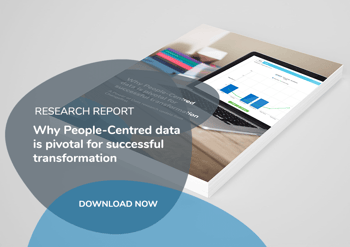
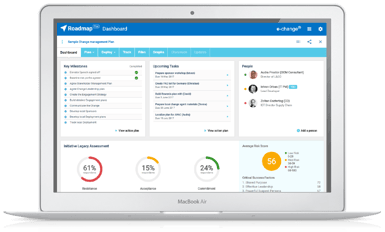


Leave a comment